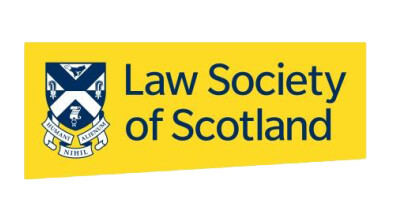Outer House rules UK government veto over Holyrood gender reform bill was lawful

A Lord Ordinary has ruled that the UK government acted lawfully in vetoing the Scottish Parliament’s Gender Recognition Reform Bill from receiving lawful assent, after a legal challenge to the block was brought by the Scottish Ministers.

About this case:
- Citation:[2023] CSOH 89
- Judgment:
- Court:Court of Session Outer House
- Judge:Lady Haldane
It was argued for the petitioners that the preconditions to making a section 35 order under the Scotland Act 1998 had not been met. In the event that section 35 was in fact engaged, the order was criticised on the basis of error of law, irrationality, adverse effects, irrelevant considerations, and inadequate reasoning.
The petition was considered by Lady Haldane, with the Lord Advocate, Bain KC, appearing for the petitioner and D Johnston KC for the respondent.
Long stop
On 17 January 2023, the Secretary of State for Scotland made an order under section 35 of the Scotland Act 1998 blocking Royal Assent to a Holyrood bill designed to make it easier for people to obtain a Gender Recognition Certificate in Scotland. He did so on the basis that he had reasonable grounds to believe the Bill modified the law as it related to reserved matters and would have an adverse effect on the operation of the law as it related to reserved matters.
The key changes introduced by the Bill were to lower the minimum age at which an application could be made from 18 to 16, to introduce a ‘reflection period’ before a certificate can be granted, to reduce the period in which a person requires to have lived in their acquired gender from 2 years to, generally, 3 months, and to remove the requirement contained in the 2004 Act for a diagnosis of gender dysphoria. A person satisfying these requirements would obtain a Scottish Gender Recognition Certificate, which would have effect only in Scotland.
It was submitted on behalf of the petitioners that the case was not concerned with the legislative competence of the Bill, noting that no reference under section 33 of the Scotland Act had been made. The case truly concerned the proper construction of section 35 and the intention in enacting it. It was clear from debate in the UK Parliament at the time that the power was only ever intended as a “long stop” that should by its mere existence be sufficient to ensure it ought never in practice to be used.
The Lord Advocate went on to submit that it was clear in any event that none of the preconditions required for a section 35 order to be pronounced were in place. The effect of obtaining a GRC would be the same under the 2004 Act procedure and the new Scottish procedure. The Bill had been brought before Holyrood following in depth consultation on its possible effects and at no time prior to the day of the passage of the Bill did the Secretary of State indicate he was considering such an order.
For the respondent it was submitted that section 35 was expressly part of the constitutional structure and any suggestion it had been used under the grounds of a policy disagreement was a red herring. Nothing in the material before the court would permit the conclusion that the making of the order was anything other than a good faith decision.
Sincere view
In her decision, Lady Haldane began by observing: “The power contained in the section of the Scotland Act 1998 that lies at the heart of this case has never before been invoked. That is a fact upon which the petitioners place some considerable emphasis, perhaps unsurprisingly. The overarching position of the Scottish Ministers therefore is that the making of the Order on this occasion constitutes an impermissible encroachment upon the separation of powers, fails to respect the principle of parliamentary accountability, and thus undermines the constitutional balance struck at the time the 1998 Act was enacted.”
On the timing of the veto, she said: “Whilst it might entirely understandably be thought to be good practice, or even perhaps in accordance with usual practice, to flag significant concerns about a Bill at the earliest possible opportunity, it is equally the case, as the respondent argued, that until a Bill is in final form (assuming there is no concern about its overall competency) the question of whether or not it might actually (a) modify the law and (b) have an adverse effect upon reserved matters, cannot be known.”
She continued: “Whilst I have no hesitation in accepting that the petitioners hold a sincere view as to what they suspect to be the motivation behind the making of the Order I cannot on the material before me, conclude that the Order was made on this basis.”
No single right answer
Turning to the circumstances in which section 35 can be invoked, Lady Haldane said: “The effect of the amendment to section 25 [of the Gender Recognition Act 2004] will be to alter the unqualified continuation in force of section 9 of the 2004 Act. That section has in substance been amended by the Bill, and on the basis of the acceptance by the petitioners that section 9 operates as the interface between the Bill and the Equality Act, which is within the reserved area of Equal Opportunities, the first precondition of section 35 has been met, and the section is therefore engaged.”
She went on to say: “This is plainly a situation where another decision might have been made with equal propriety, and its predictive nature means that there is possibly no single right answer. That being so, the court should intervene only if no reasonable authority could have been satisfied on the basis of the inquiries made that it possessed the information necessary for its decision. I cannot conclude that that limb of the test is satisfied in this case.”
Evaluating further the reasoning behind the Secretary of State’s decision, Lady Haldane added: “The Secretary of State only being bound to take such steps as are reasonable to inform himself and provide reasons, as well as the lack of any specific requirement in the 1998 Act as to any particular requirements or standard that the reasons must achieve. It is also worth noting perhaps, that until the present litigation, there was no suggestion on the part of the petitioners that they were unable to understand the reasons or found them to be unintelligible or ambiguous.”
She concluded: “It follows from all of the foregoing analysis that the challenge to the Order pronounced under section 35 of the 1998 Act, laid on 17 January 2023, fails. In so concluding it is important to recognise the novelty and complexity of the arguments and the sophisticated manner in which those arguments were presented before me and from which I derived considerable assistance.”
The petition was therefore dismissed.










